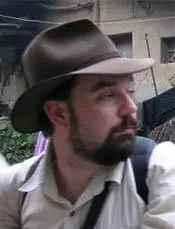About the project
Sand dollars are flattened, disc-shaped sea urchins that live in high-energy coastal environments across the globe. Why they evolved this atypical morphology remains a mystery. This project aims to uncover how environmental pressures shaped the sand dollar body plan using cutting-edge 3D morphometrics, computational techniques from engineering and evolutionary modeling.
Understanding how the environment has shaped the evolution of form and function is a key question in evolutionary biology, yet one which is still not well-understood. For example, while it is clear that marine species are strongly influenced by their fluid environment (i.e., the ocean), the extent to which this has driven their evolution through time remains uncertain.
This novel interdisciplinary project will address this by investigating the role of fluid mechanics in shaping the evolution of body plans. Sand dollars are diverse and abundant in today’s oceans and have one of the best fossil records for any animal group. They are adapted to live in high-energy nearshore environments, yet the role of moving fluids in shaping their body plans is unclear. Using high-resolution 3D morphometrics of fossils, as well as museum specimens of extant species, the student will use phylogenetic and statistical modelling to characterize the pattern and pace of sand dollar evolution, uncovering when and how they evolved their flattened, disc-shaped body plan. They will then use computer simulations and biomechanical experiments to test hypotheses regarding the role of fluid flow in the evolution of the sand dollar body plan.
The student will receive training in cutting-edge techniques from a world-class, interdisciplinary team comprising palaeobiologists, biomechanists and marine biologists from the University of Southampton and the Natural History Museum. The results will transform our knowledge of the evolution of form and function in sand dollars, with implications for understanding how the environment has influenced animal evolution more broadly.
Supervisory team
The supervisory team includes supervisors from several organisations. Please contact the Lead Supervisor for more information about the team.
Training
The INSPIRE DTP programme provides comprehensive personal and professional development training alongside extensive opportunities for students to expand their multi-disciplinary outlook through interactions with a wide network of academic, research and industrial/policy partners. The student will be registered at the University of Southampton and hosted in the School of Ocean and Earth Science. Specific training will include:
- Generation and analysis of micro-CT scan data
- Analysis of 3D geometric morphometric data
- Phylogenetic comparative methods using R
- Computational fluid dynamics
- Analysis of fossil and modern specimens from museum collections
- Training in experimental measurement with fluids to determine effects of interactions between fluid dynamics and organisms under dynamic conditions
- Scientific writing and dissemination of results through publications
- Preparation and presentation of results via posters and talks at the Palaeontological Association meeting (held annually in the UK/Europe)
- Opportunity to gain science communication skills through the Natural History Museum’s NHM Lates of Nature Live events


